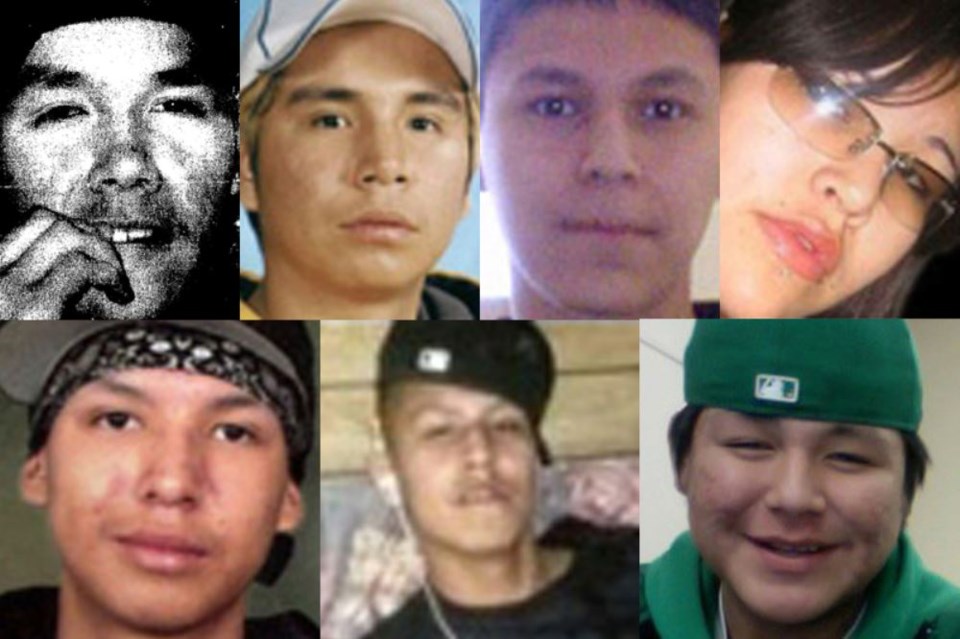THUNDER BAY – Anna Betty Achneepineskum had hoped in the one year following the seven youth inquest more progress would have been made towards implementing the 145 recommendations.
The Nishnawbe Aski Nation deputy grand chief said while Indigenous organizations have addressed many of the recommendations as well as they can, they are stifled by lack of funding from senior levels of government.
“We all hoped with the commitment from Nishnawbe Aski Nation and our education partners such as (Keewaytinook Okimakanak) and (Northern Nishnawbe Education Council) and Matawa that we would be at a place right now where we would have some items in progress where we would be able to tell our students when they come back in September, ‘Yes, we’re going to have some of these resources and services available for you,’” Achneepineskum said.
“Even a commitment to saying that in two years time we would be able to build a residence to be able to provide a safer home while here to attend school. Even if we had something like that, but we don’t.”
Coming on the one-year anniversary of the conclusion of the coroner’s inquest into the deaths of seven Indigenous youth, Nishnawbe Aski Nation on Wednesday released their first annual response to the recommendations aimed at preventing future similar deaths.
The inquest, which included testimony from 146 witnesses and 185 exhibits, examined the deaths of Jethro Anderson, Curran Strang, Paul Panacheese, Robyn Harper, Reggie Bushie, Kyle Morrisseau and Jordan Wabasse, who all died in Thunder Bay between 2000 and 2011 while attending high school in Thunder Bay.
Of the 145 total legally non-binding recommendations produced by the jury, 25 were directed towards NAN.
But full implementation of many of the recommendations require support from the provincial and federal governments, Achneepineskum said.
In a statement released Wednesday afternoon, Indigenous and Northern Affairs Minister Carolyn Bennett said the federal government has provided $6.5 million in ongoing funding towards guidance counselling at First Nations schools, expanded funding for boarding homes and doubling the number of trips home for students attending school away from their community.
“The government recognizes that funding alone is not enough,” Bennett said. “There are systemic issues at play that will require all partners to work more effectively together.”
Ministry officials could not confirm whether the government had produced its own annual report. One of the recommendations made by the jury was for all named parties to produce a report every year outlining the status of each of the recommendations.
Achneepineskum has grown frustrated by lack of momentum addressing a number of the sweeping recommendations towards the federal government to improve First Nations education.
There have been a number of sessions held to address the education system but Achneepineskum said there has been a lack of momentum, particularly from Ottawa.
“Each time we would have a meeting they would be sending a new delegate to this meeting which meant we would have to re-educate this person and also get them caught up on what it was we were trying to do,” Achneepineskum said.
The fifth recommendation by the jury is directed at both senior levels of government and NAN, stating that “no student should be denied access to a provincial or first Nations high school program for lack of space or supported living arrangements.”
“Recommendation is accepted and complete as far as NAN’s capacity and authority allow; though students are yet being denied access to First Nations high school programs due to a lack of space and/or supported living arrangements,” the response reads.
“Sufficient funding, policy changes and political will from the provincial and federal governments is required to remove all barriers to access.”
That recommendation, and the challenges to implement, illustrates the inequality Indigenous students from remote communities face, Achneepineskum said.
“These are very substantial commitments and investments that are required but these requirements are what is available for any other student in Canada yet we continue to struggle to get this for our students,” Achneepineskum said.
Another recommendation called on NAN to work with Canada and Ontario to develop a suicide prevention strategy, though the NAN response noted there has been no new funding towards that initiative.
Three youth from Wapekeka First Nation have died by suicide so far this year, with the latest occurring earlier this month.
NAN, along with the Northern Nishnawbe Education Council, Keewaytinook Okimakanak, Dennis Franklin Cromarty High School and the Matawa Learning Centre, were also directed to ensure all community supports including continuing education, health and mental health plan are in place for students being sent home from Thunder Bay prior to their arrival back in their home communities.
The response stated the loss of youth due to lack of services in the community and loss of youth due to health and safety concerns in Thunder Bay “continues unabated” and the lack of support programs is a “significant issue of crisis proportions.”
The bodies of five of the seven youth were found in Thunder Bay rivers. Two Indigenous teens – 17-year-old Tammy Keeash and 14-year-old Josiah Begg – were found dead in Thunder Bay waterways last month.
Achneepineskum said she spoke with some of the mothers of the seven youth following the most recent deaths.
“The memories of their losses came back to the surface,” she said. “Unfortunately, that’s going to happen every time they hear of a loss here in the city because the circumstances are all similar.”
